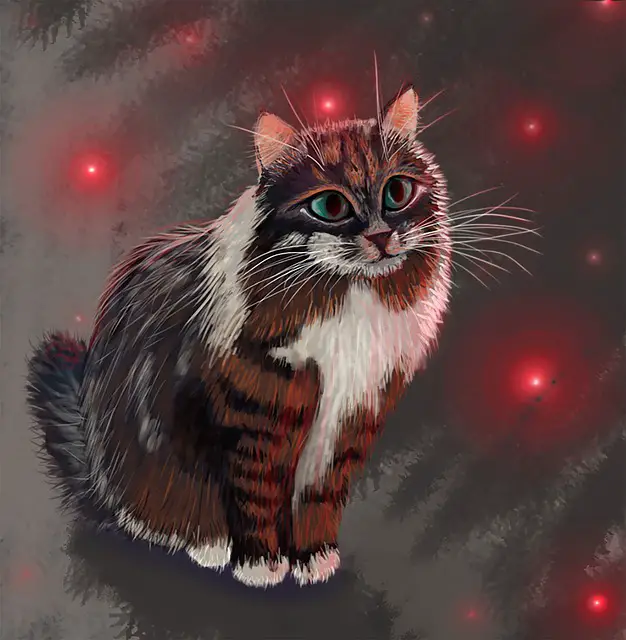The Siberian cat is one of the oldest breeds of domestic cats in the world, perhaps the oldest. In fact, Siberian cats are considered by some to be the ancestor of all domestic cat breeds. They also have another title draped across their furry backsides.
Siberian cats are also considered to be the kings and queens of all that are hypoallergenic. Scientific study after study has shown that Siberian cats, even the males, are probably the most hypoallergenic of all other domestic cats.
Just looking at a Siberian cat, you certainly wouldn’t think that it is hypoallergenic. Siberian cats are long-haired cats and quite fluffy, much like the Ragdoll and Ragamuffin, but far older in lineage. As their name implies, they were built for seriously cold temperatures.
What is a Hypoallergenic Cat?
The Fel D 1 protein is the protein that is responsible for all the heartache wrought by allergies. The problem of Fel D 1 is that it is everywhere. It is secreted from the cat’s saliva, from their skin, fur, dander, and urine.
They leave it everywhere that they go although, of course, unwittingly. It’s not as if your cat holds secret meetings with the dog and the bearded dragon to go around planting the seeds of your nasal destruction.
Domestic cats are simply one of the most common allergen carriers outside of dust mites, which is really a shame since there are many cat breeds that are intensely affectionate, loyal, and loving, like the Siberian.
Fortunately, Siberian cat owners don’t have to deal with this on the same level as other breeds. Even the Siberian male, who excretes far more Fel D 1 than the female, only creates a tiny amount compared to other male domestic cats.
In the list of the most hypoallergenic cats, the Siberian cat ranks seventh, behind breeds such as the Oriental, Balinese, Cornish Rex, and the Sphinx, the latter of which takes the number one spot, for obvious reasons.
What if you are Allergic to Siberian Cats?
The first thing that you would want to do is figure out whether or not the allergies that you are experiencing are actually coming from your Siberian cat. There are many things in a home that can cause allergies.
If your allergies started only once you brought a Siberian cat home, that’s definitely telling but it might not be the whole story. Practice a thorough process of elimination before getting rid of your Siberian, as it would probably be more traumatic on the Siberian to change hands than it would you.
If you are allergic to your Siberian, you will likely exhibit a number of symptoms.
- Your skin is red and puffy all of the time
- Shortness of breath
- Sneezing, runny nose, and watery eyes
- You feel tired all of the time
- Sore throat that never seems to go away
Of course, there are other things that can cause the above symptoms, however, if they coincide with the arrival of your Siberian and you have eliminated all of the other possibilities, then that means you are most likely a rare person who is allergic to Siberian cats.
If a Siberian cat gives you allergy problems, you probably wouldn’t be safe even with a Sphinx in your home, so your cat days should probably be put behind you.
Does a Siberian Cat Shed A lot?
Siberians shed an awful lot. It’s like owning a miniature Husky. Fortunately, the hair shedding everywhere isn’t what causes allergies, as they have to carry the Fel D 1 protein on them, which is very minute in Siberians.
That doesn’t make the shedding any less dramatic, however, and like all long-haired cats, you’ll need to establish a strict, daily grooming regimen to cut down on the shedding. There are also some other tools at your disposal.
- Purchase a pet grooming glove
- Brush your Siberian for up to five minutes, once per day
- Give your Siberian a bath once or twice a month
- Use oatmeal and skin supportive shampoos
- Feed your Siberian a premium diet, high in Omega 3s
Pet grooming gloves are phenomenal. After you give your Siberian a good brush each day. Put on a Pet Grooming Glove and give it a once-over or two. It uses static electricity to gather all of the loose hair magnetically, reducing the shedding.
Be sure to use shampoos that are not full of artificial chemicals and garbage that is highly marketed and comes at a cheap price. You want to bathe your Siberian with cat shampoo that is natural and full of pro-skin ingredients.
The bath will also give you a chance to check your Siberian over for fleas or parasites, both of which can cause severe skin irritation and drastically increase the amount of dander and shedding that comes from your cat.
Even if you don’t experience any allergies with your Siberian cat, a flea infestation may change that until you are able to remove them.
Lastly, be sure to feed your Siberian a premium diet that’s focused on improving their skin and coats. All of the above will cut the shedding down and improve your Siberian’s quality of life, as well as yours.
Final Thoughts
It’s rare to encounter a heavy or even a light allergic reaction from a Siberian Cat, as they are one of the most hypoallergenic cats that you could possibly own. Despite their extreme fluffiness, you shouldn’t have to worry about allergies with a Siberian, just a whole lot of fur.
[su_box title=”Affiliate Disclosure”]This website is supported by its readers. Please assume that all links are affiliate links. If you make a purchase from one of the links we will make a commission from Amazon. Thank you.[/su_box]




